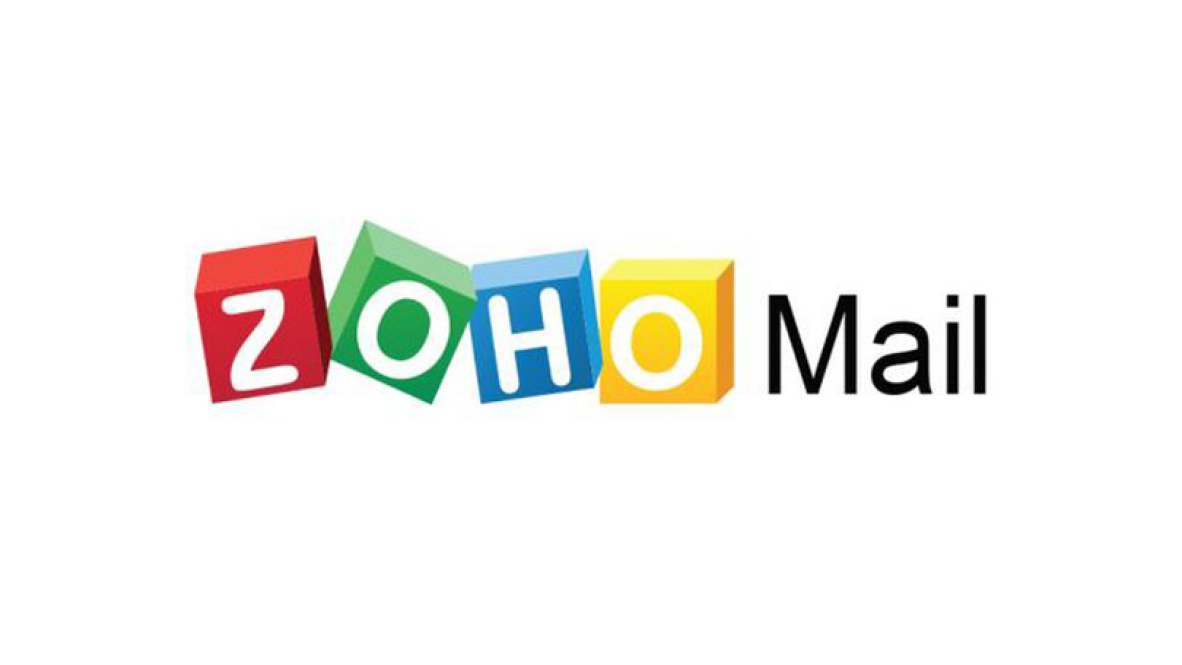Zoho Mail: India’s Homegrown Alternative to Gmail for Secure Business Communication
In today’s digital-first world, Zoho Mail stands out as a reliable, privacy-focused, and feature-rich email service—built in India, for the world. Developed by Chennai-based Zoho Corporation, it offers an ad-free, secure, and enterprise-grade email platform that empowers individuals, startups, and large businesses alike.
Unlike many global email services that monetize user data, Zoho Mail prioritizes data privacy and security, with servers hosted in India to meet local compliance and data sovereignty norms. This makes it a trusted choice for Indian entrepreneurs, government offices, and educational institutions looking for a “Made in India” digital communication solution.
With its sleek interface, seamless integration across the Zoho ecosystem (including Zoho CRM, Projects, and Workplace), and affordable pricing plans tailored for Indian users, Zoho Mail is redefining professional email for the new Bharat—a smart, self-reliant, and digitally empowered India.
What Is Zoho Mail?
Zoho Mail is a cloud-based email hosting and webmail service offered by Zoho Corporation, aimed especially at business users, organizations, and professionals. It offers email hosting on custom domains, integrated collaboration tools (calendar, contacts, tasks, notes), security features (encryption, two-factor auth), and migration tools from other email platforms.
Some key features of Zoho Mail include:
- Custom domain support — you can run email addresses like yourname@yourcompany.com using Zoho’s mail servers.
- Integrated apps — calendar, tasks, notes, bookmarks are built into your mailbox interface.
- Collaboration via Streams — similar to social feed, you can tag colleagues, comment on threads, collaborate within mail UI.
- Security & privacy — SSL/TLS encryption, two-factor authentication, S/MIME support (in certain plans), email retention policies.
- Migration capabilities — support for migrating email, contacts, calendars from Gmail / Google Workspace, IMAP, POP, Exchange, etc.
Zoho Mail positions itself as a privacy-oriented, business-friendly alternative to Gmail (especially for companies that prefer a custom domain email). It is part of Zoho Workplace (Zoho’s suite of productivity apps).
Gmail vs Zoho Mail: Which One Is Better for You?
When deciding between Gmail (or Google Workspace) and Zoho Mail, consider how each stacks up across storage, features, pricing, and use case. Below is a comparative overview.
| Feature | Gmail / Google Workspace | Zoho Mail |
|---|---|---|
| Storage / quotas | Free Gmail gives 15 GB shared across Gmail, Drive, Photos. For Google Workspace (business), storage varies by plan. | Zoho’s free plan gives 5 GB per user (just for mail). Paid plans raise that (Mail Lite, etc.) |
| Custom domain | Only with Google Workspace (paid) you can use custom domain email. | Zoho supports custom domain even in paid plans; free plan may have limited domain features depending on region. |
| Features & collaboration | Strong integration with Google Drive, Docs, Meet, Chat. Excellent search, common tools. | Built-in apps (calendar, tasks, notes), Streams collaboration, email sharing, tags, rules. |
| Security & privacy | Top-tier infrastructure, 2FA, phishing protections, etc. | Zoho also offers encryption, S/MIME, email retention, strict data policies. |
| Pricing | Free for personal Gmail. Google Workspace plans for business start from paid tiers. | Free plan for small users; paid plans often cheaper than Workspace for similar features. |
| Migration / flexibility | Very popular and well supported; many tools support Gmail. | Zoho has built migration tools for Gmail/Workspace and other servers. |
When Gmail might be better:
- You heavily rely on Google’s ecosystem (Drive, Docs, Sheets, etc.)
- You require large storage for files and media
- You want a very mature, widely adopted platform with many third-party integrations
When Zoho Mail might be better:
- You want a custom domain email affordably
- You want good email/collaboration features bundled without paying a lot
- You want a more privacy- or features-focused mail host
- You are migrating your business email and want integrated tools without being locked into Google
In short: Gmail is strong and familiar; Zoho Mail gives you more control, custom domain flexibility, and competitive pricing.
How to Register / Set Up Zoho Mail
Here is a step-by-step on how to register a Zoho Mail account (personal or business):
1. Choose between Free or Paid / Domain Setup
- Visit Zoho Mail and choose Personal Email or Business / Custom Domain option.
- If you want to use your own domain (e.g. yourcompany.com), choose Business plan. Otherwise, free personal email uses
@zohomail.com(depending on region and availability). - Fill in your name, desired username, password, phone number (for verification).
- Accept the terms and verify via OTP or code.
2. Domain Verification (for business / domain users)
If you are using your own domain:
- Zoho will ask you to verify ownership of the domain. You will need access to your domain’s DNS records.
- You may be required to add a TXT record, CNAME, or HTML file as instructed to confirm ownership.
- After verification, set up MX records (mail exchange DNS records) to point email routing from your domain to Zoho Mail. This ensures incoming mail arrives in Zoho’s servers.
- Optionally set up SPF, DKIM, DMARC records for improved email deliverability and anti-spam protection.
3. Create / Add Users (for business)
- In Zoho’s Admin Console, you can add users, assign email addresses, configure groups, aliases, and roles.
- For each user, assign mailbox storage, email aliases, forwarding rules, etc.
4. Configure Mailbox & Preferences
- Once setup is done, log in at mail.zoho.com or via Zoho Workplace portal.
- Configure signature, filters, forwarding, alias addresses, reading pane preferences, conversation view, etc.
- Enable two-factor authentication (2FA).
- If migrating from another service (e.g. Gmail), you can follow migration steps below.
Zoho also provides guided setup wizards in Control Panel / Admin Console and help documentation.
How to Migrate Emails from Gmail to Zoho Mail
Migrating email from Gmail (or Google Workspace) to Zoho Mail is a common need when switching. Zoho provides built-in tools and recommended methods. Here’s how you can do it:
Prerequisites & planning
- You must create the Zoho Mail user accounts first (destination accounts) before migrating.
- For Gmail/Google Workspace, you may use IMAP migration or one-click migration (app-based).
- For IMAP, you’ll need correct IMAP server address (
imap.gmail.com), port (usually 993 with SSL), and valid credentials (or app-specific password). - Be aware: Gmail uses labels (emails can have multiple labels). When migrating to Zoho Mail (folder-based), one labeled email may be duplicated into multiple folders (leading to extra space usage).
- You can exclude certain folders or limit date ranges for migration to avoid huge volume.
Migration via IMAP (Gmail → Zoho Mail)
This is the typical and recommended method:
- Log into Zoho Mail Admin Console, go to Data Migration.
- Choose to Start a new migration (or “+ Create”).
- Select Protocol / Application = IMAP.
- Enter server details:
- IMAP server:
imap.gmail.com - Port: 993 (SSL)
- Security: SSL
- IMAP server:
- Choose which folders to migrate (All folders / specific ones).
- Choose email range (all emails or specify “From / To” dates).
- Under Other preferences, you can:
- Exclude inbox mails with multiple labels
- Mark Gmail starred/important as special tags in Zoho
- Control POP access for migrated emails
- Add user mappings: map each Gmail account to the corresponding Zoho Mail account.
- Start the migration job. Monitor progress and check for failures or skipped items.
Zoho shows detailed reports on folder-wise success or failures.
One-Click / App-Based (for Google Workspace)
If your Gmail is under Google Workspace (business), Zoho offers “one-click migration”:
- Authenticate Zoho to access your Google Workspace account, authorize the tool.
- Zoho will fetch user lists, map accounts, and migrate email, contacts, calendars automatically.
- You may still need to validate certain API or permissions.
Alternative / Manual Methods
- PST / EML import: If you have email archives in PST/EML format, Zoho supports importing them.
- Third-party migration tools: Some tools or services (e.g. Advik, migration utilities) can automate migration of mailboxes.
- POP forwarding: In Gmail settings, you can set up forwarding or allow Zoho to fetch via POP, but this method is gradual and may not preserve all metadata (e.g. folder structure).
- Manual drag/drop via email client: Use an email client (e.g. Thunderbird) to connect to both Gmail and Zoho via IMAP and drag messages between mailboxes. (This is manual and slower.)
After Migration: Post-Steps & Best Practices
- Verify email delivery: Once MX records are updated, verify that new emails go into Zoho Mail inbox.
- Keep old Gmail as backup: Maintain Gmail account access for some weeks to catch stragglers.
- Update email signatures, auto-forwarding rules
- Inform contacts of your new address (if domain changed)
- Test important workflows (e.g. filters, labels, integrations).
- Clean duplicate emails: Because of Gmail labels, duplicates may appear — check for duplicates and remove or reorganize.




